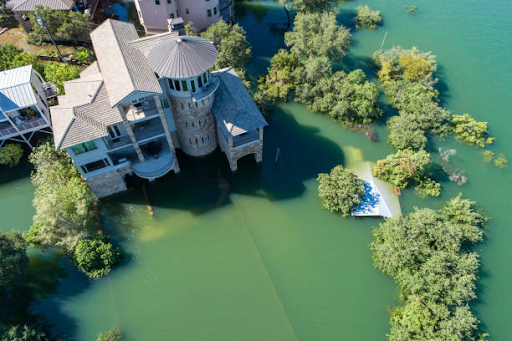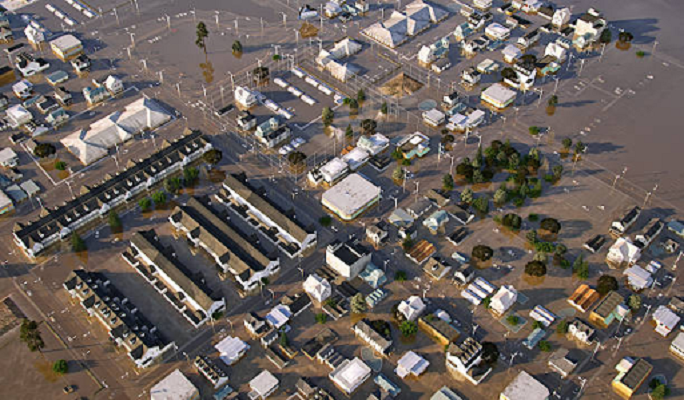Florida sunshine is great—until the skies open up and don’t stop. If you’ve ever watched water rise outside your window during a storm, you know how fast an ordinary rainy day can turn into an emergency flood situation.
Most people think their home insurance will cover everything. Sadly, that’s not always the case. Understanding the limits of your home insurance and flooding is key to making sure your property and wallet stay safe when the rain just won’t quit.
This blog will walk you through:
- What counts as a flood emergency
- How home insurance and water damage coverage works
- What steps to take during and after a flood
- How to make sure you’re fully protected
What Is an Emergency Flood Situation?
Not all water damage is treated the same by insurance companies. It’s important to understand when water becomes a flood—and what qualifies as an emergency.
Common Emergency Flood Scenarios:
- Torrential rainstorms causing street and home flooding
- Hurricanes or tropical storms overflowing drainage systems
- Rivers, lakes, or coastal waters rising and entering your property
- Flash floods due to heavy rainfall in short periods
- Levee or dam failures
Tip: Flooding that covers at least two acres or affects two or more properties is what FEMA typically defines as a “flood.”
Does Home Insurance Cover Flooding?
This is where many homeowners get caught off guard.
Here’s the reality:
- Standard home insurance does NOT cover flooding.
- It may cover some water damage and home insurance claims, but only in specific situations.
What Kind of Water Damage Does Home Insurance Cover?
There’s a fine line between water damage and flood damage—and insurers treat them differently.
Usually Covered:
- Burst pipes
- Leaking roofs (from wind damage, not long-term neglect)
- Water damage from a faulty appliance (like a washing machine overflow)
NOT Covered:
- Water seeping in from the ground
- Rising water from outside sources
- Storm surges or overflowing rivers
- Flash flooding from heavy rain
Bottom Line: If the water hits the ground before it hits your home, it’s considered a flood—and standard home insurance won’t cover it.
What Is Flood Insurance and Why Do You Need It?
Flood insurance is a separate policy designed specifically to cover damage caused by rising water.
It typically includes:
- Structural damage (walls, foundation, flooring)
- Major systems (electrical, plumbing, HVAC)
- Appliances and personal belongings
- Cleanup and mold remediation in some policies
Did you know? FEMA offers flood insurance through the National Flood Insurance Program (NFIP), but private insurers also provide custom options with broader coverage.
The Difference Between Flood Insurance and Homeowners Insurance
Let’s clear up some confusion with a quick side-by-side:
| Feature | Homeowners Insurance | Flood Insurance |
| Burst pipes | Covered | Not needed |
| Flash flood | Not covered | Covered |
| Sewer backup | Sometimes (add-on) | Sometimes |
| Roof leak | If sudden | If caused by flood |
| Required by mortgage? | Yes | Only in high-risk areas |
Why Flood Risk Is Rising in Florida?
Florida’s geography makes it especially vulnerable to flooding—and it’s only getting worse.
Key Risks:
- Flat terrain with poor drainage
- Rising sea levels
- Increasing hurricane intensity
- Dense urban development reducing natural runoff
- Aging infrastructure
Reminder: You don’t have to live on the coast to experience flooding. Inland areas are often just as vulnerable.
What To Do During an Emergency Flood?
Stay Safe:
- Listen to local alerts or evacuation orders
- Don’t walk or drive through floodwaters
- Shut off electricity if water is rising near outlets
Protect Your Property:
- Move valuables to higher ground
- Seal doors with towels or sandbags if available
- Take photos of your home pre- and post-flood for insurance records
What To Do After the Flood?
Once the water recedes, it’s time to act quickly.
Step-by-Step Recovery:
- Contact your insurance provider immediately
- Document all damage with photos and videos
- Start drying out your home ASAP
- Avoid touching electrical systems until cleared
- Keep receipts for repairs and temporary accommodations
Pro tip: Never assume your policy covers everything—always confirm before starting major cleanups or hiring contractors.
Why You Shouldn’t Wait to Get Flood Insurance?
Many policies—especially NFIP—have a 30-day waiting period before coverage begins.
Waiting until a storm is forecast means:
- You won’t be protected if it hits within a few days
- You’ll pay for repairs out of pocket
- You’ll have limited government assistance, if any
Buying now = peace of mind later.
What Affects Your Flood Insurance Cost?
Just like auto insurance, flood policy prices vary depending on risk and coverage.
Main Cost Factors:
- Location and flood zone classification
- Elevation of your home
- Age and type of construction
- Whether you’ve taken mitigation steps (like raising utilities)
- Coverage limits and deductible choice
Private insurers may offer lower rates and more flexible terms than federal options, especially for homes outside high-risk zones.
How to Lower Your Risk and Your Premium?
Simple Preventive Actions:
- Install a sump pump or backflow valve
- Use water-resistant materials for basements or ground floors
- Elevate utilities above potential flood levels
- Grade your yard away from the home
- Keep gutters and storm drains clear
These steps can not only protect your home but also lower your premium.
FAQs About Home Insurance and Flooding
Can I buy flood insurance if I’m not in a high-risk area?
Absolutely. And often at a lower rate. Flooding happens everywhere.
Will FEMA help me if I don’t have flood insurance?
Maybe, but don’t count on it. FEMA disaster aid is limited and doesn’t replace insurance.
Can renters get flood insurance?
Yes! Renters can insure their personal property even if the landlord insures the building.
What if I already have water damage—can I still get covered?
No. Insurance doesn’t cover pre-existing damage. That’s why it’s critical to buy coverage before anything happens.
Don’t Gamble With Your Home—Get Covered Now
Be Ready Before the Storm Hits
At Flood Insurance HQ, we make protecting your home simple and stress-free.
Here’s what we offer:
- Instant flood risk assessments
- Side-by-side comparisons of NFIP and private insurance
- Customized policy recommendations
- Expert support every step of the way
Get your free flood insurance quote today
No pressure. Just clarity and protection when it matters most.
Final Thoughts
Flooding can devastate homes, destroy memories, and drain your finances. And when the rain doesn’t stop, you need more than just hope—you need protection that works.
Here’s what you can do today:
- Review your home insurance policy
- Understand what’s covered and what isn’t
- Consider your flood risk—even if you’re inland
- Talk to a flood insurance expert about your options
- Act now, not later
You can’t stop the storm, but you can control how prepared you are when it arrives.






